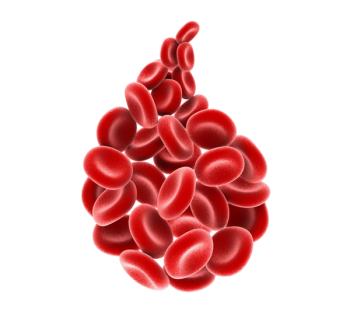
For Ovarian Cancer Treated With Olaparib/Bevacizumab, CA-125 Shows Promise for Identifying Disease Progression
An analysis from a phase 3 clinical trial shows the feasibility of CA-125 surveillance alone as a method for tracking disease progression in patients with advanced ovarian cancer receiving frontline maintenance with olaparib and bevacizumab.
In patients with an abnormal CA-125 level at the beginning of frontline maintenance therapy, surveillance of CA-125 alone may be used to detect disease progression of advanced ovarian cancer being treated with olaparib (Lynparza) and bevacizumab (Avastin). These results were taken from an analysis of the phase 3 PAOLA-1 trial (NCT02477644) and were presented at the Society of Gynecologic Oncology (SGO) 2021 Annual Meeting on Women’s Cancer.
Additional data showed that patients who have a normal baseline CA-125 level could benefit from concomitant imaging and CA-125 surveillance.
Of 462 patients in the intention-to-treat (ITT) population with Response Evaluation Criteria in Solid Tumors (RECIST) progression, 39% had RECIST progression alone and 45% had CA-125 progression before RECIST progression, with a 2.4-month median time between CA-125 and RECIST progression. The remaining patients (16%) had CA-125 progression at the same time as reported RECIST progression.
In patients with an abnormal baseline CA-125 level (n = 89), 16.9% had RECIST progression alone, 16.9% had CA-125 progression concomitant to RECIST progression, and 66.3% had CA-125 progression before RECIST progression. In patients with a normal baseline CA-125 level (n = 372), 44.4% had RECIST progression alone, 16.1% had CA-125 progression concomitant to RECIST progression, and 39.5% had CA-125 progression before RECIST progression.
“Only 17% of patients with abnormal baseline CA-125 levels at the start of maintenance therapy had RECIST progression alone compared with 44% of patients with normal baseline CA-125 levels [P <.001]. This suggests that the baseline CA-125 level when patients start maintenance therapy with olaparib plus bevacizumab may guide subsequent follow-up methods,” said lead study author Sakari Hietanen, MD, PhD, an associate professor, and chief of the Department of Obstetrics and Gynecology at Turku University Hospital, in Turku, Finland, in a virtual presentation of the data.
Limited evidence has shown the utility of using serum CA-125, a surrogate biomarker for disease progression, to identify relapse in patients receiving a PARP inhibitor as maintenance therapy. To that end, investigators evaluated progression per RECIST v1.1 criteria/CA-125 to determine the role of CA-125 as a potential surveillance marker in PAOLA-1.
In the PAOLA-1 trial, patients with newly diagnosed International Federation of Gynecology and Obstetrics stage III/IV, high-grade serous or endometrioid ovarian, fallopian tube and/or primary peritoneal cancer who had received up-front or interval surgery, platinum/taxane-based chemotherapy, and at least 2 cycles of bevacizumab were randomized 2:1 to receive 300 mg of olaparib twice daily for 2 years plus bevacizumab or placebo plus bevacizumab.
Primary results showed that olaparib plus bevacizumab led to a statistically significant improvement in PFS as a first-line maintenance therapy vs bevacizumab alone following first-line platinum-based chemotherapy in patients with advanced ovarian cancer.
In the overall population, the median PFS was 22.1 months with olaparib/bevacizumab vs 16.6 months with placebo/bevacizumab (HR, 0.59; 95% CI, 0.49-0.72; P <.001). In patients with homologous recombination deficiency (HRD), defined as a BRCA1/2 mutation and/or a genomic instability score of at least 42, the median PFS was 37.2 months with olaparib/bevacizumab vs 17.7 months with placebo/bevacizumab (HR, 0.33; 95% CI, 0.25-0.45).
“In the primary PAOLA-1 analysis, adding olaparib to maintenance bevacizumab provided a significant PFS benefit based on RECIST criteria according to investigator assessment. A significant PFS benefit provided by olaparib plus bevacizumab vs placebo plus bevacizumab was consistent with that reported in the primary analysis [with extended follow-up],” said Hietanen.
Time from randomization to earliest progression by RECIST, CA-125, or death served as a secondary end point of PAOLA-1. Tumor assessment scans were performed every 24 weeks, or every 12 weeks if there was evidence of clinical or CA-125 progression. CA-125 levels were assessed every 12 weeks.
CA-125 progression was defined as a CA-125 level at least 2 times the nadir value of patients with abnormal pretreatment levels or the upper limit of normal level of patients with normal pretreatment/normalized levels on 2 occasions at least 1 week apart. CA-125 progression before RECIST progression was defined as CA-125 progression more than 7 days before RECIST progression. CA-125 progression concomitant to RECIST progression was defined as CA-125 progression 7 or fewer days before or after RECIST progression.
The median follow-up for PFS assessed by RECIST/CA-125 was 24.2 months in the olaparib/bevacizumab arm (n = 537) vs 24.7 months in the placebo/bevacizumab arm (n = 269). The median PFS was consistent with the primary analysis, at 22.1 months in the olaparib/bevacizumab arm vs 15.4 months in the placebo/bevacizumab arm using time to earliest progression by RECIST, CA-125, or death (HR, 0.58; 95% CI, 0.48-0.70). The 2-year PFS rates were 47% and 28%, respectively.
Additional findings indicated that baseline CA-125 levels provided a more accurate picture of which patients could be monitored by CA-125 levels alone vs imaging plus CA-125 levels compared with HRD status.
In HRD-positive patients (n = 171), 45.0% had RECIST progression alone, 15.8% had CA-125 progression concomitant to RECIST progression, and 39.2% had CA-125 progression before RECIST progression. In HRD-negative/unknown patients (n = 291), 35.7% had RECIST progression alone, 16.5% had CA-125 progression concomitant to RECIST progression, and 47.8% had CA-125 progression before RECIST progression.
When CA-125 progression was identified prior to RECIST progression, the median time between CA-125 and RECIST progression was 2.4 months (range, 1.2-4.7) in the ITT population (n = 206), 2.0 months (range, 1.2-4.1) in the HRD-positive population (n = 67), and 2.2 months (range, 1.3-5.5) in the HRD-negative population (n = 95). In the HRD-unknown group (n = 44), the median time was 2.8 months (range, 1.1-5.1). In patients with a normal baseline CA-125 level (n = 147), the median time was 2.5 months (range, 1.3-4.7). In patients with an abnormal baseline CA-125 level, the median time was 2.1 months (range, 1.1-5.3).
In patients with BRCA mutations who received olaparib/bevacizumab, 55.3% had RECIST progression alone, 2.6% had CA-125 progression concomitant to RECIST progression, and 42.1% had CA-125 progression before RECIST progression. In patients with BRCA mutations who received placebo/bevacizumab, 43.5% had RECIST progression alone, 17.4% had CA-125 progression concomitant to RECIST progression, and 39.1% had CA-125 progression before RECIST progression.
In patients with wild-type BRCA who received olaparib/bevacizumab, 37.3% had RECIST progression alone, 15.7% had CA-125 progression concomitant to RECIST progression, and 47.0% had CA-125 progression before RECIST progression. In patients with wild-type BRCA who received placebo/bevacizumab, 36.6% had RECIST progression alone, 20.4% had CA-125 progression concomitant to RECIST progression, and 43.0% had CA-125 progression before RECIST progression.
Reference
Hietanen S, Pautier P, Harter P, et al. RECIST/CA-125 progression-free survival and the role of CA-125 surveillance in the phase III PAOLA-1/ENGOT-ov25 trial evaluating maintenance olaparib plus bevacizumab in patients with newly diagnosed advanced high‐grade ovarian carcinoma. Presented at: SGO Annual Meeting; March 19-25, 2021; virtual. Abstract 10542.
Newsletter
Stay up to date on recent advances in the multidisciplinary approach to cancer.



















































































